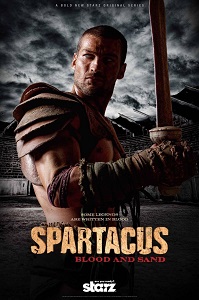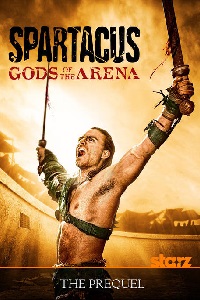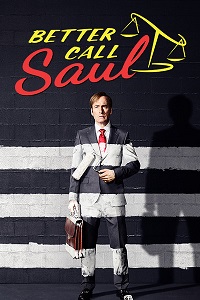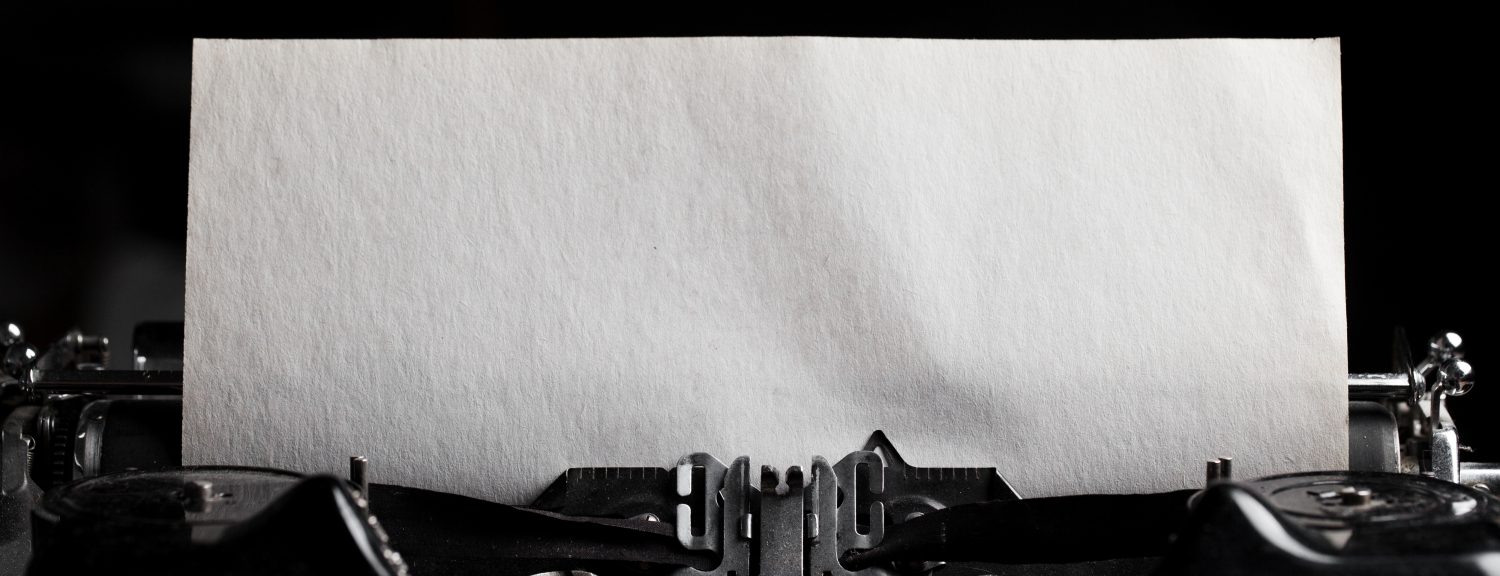Star Trekking: Part 3 of 3
Writing prequels can’t be easy. You have to fit into established canon where people know the outcome(s), yet introduce something new, and keep the storytelling compelling.

 One of my favourite prequels is Spartacus: Gods of the Arena, which takes place right before the events of Spartacus: Blood and Sand (aka season 1). In Blood and Sand, lanistas’ Batiatus (John Hannah) and Solonius (Craig Walsh-Wrightson) are mortal enemies. In Gods of the Arena, the opening scene is of Batiatus and Solonius together as close friends at gladiatorial games.
One of my favourite prequels is Spartacus: Gods of the Arena, which takes place right before the events of Spartacus: Blood and Sand (aka season 1). In Blood and Sand, lanistas’ Batiatus (John Hannah) and Solonius (Craig Walsh-Wrightson) are mortal enemies. In Gods of the Arena, the opening scene is of Batiatus and Solonius together as close friends at gladiatorial games.
What?
Immediately, we have questions. How did these two fall out? Even if we’re not aware of the existing canon, we meet two friends discussing a potential endeavour. The story explores the deterioration of their friendship. For those of us aware of the outcome, we grimace at every Batiatus slight, knowing in part where it will lead; if we don’t know the outcome, we wince at his insensitivity and the way he treats a dear and trusted friend. Already, we’re engaged and care about these characters.
The prequel also introduces a new lead gladiator, Gannicus (Dustin Clare). Unlike Spartacus, Gannicus is indifferent to the world around him … but then he does begin to care – just not about what we’d expect in a show that is about a slave rebellion. Crixus (Manu Bennett) – a champion in season 1 – is shown as a novice gladiator trying to find his way. Oenamaeus (Peter Mensah) has a wife, Melitta (Marisa Ramirez) who’s not in season 1 – what happened there? So many questions are posed, and hook us to find the answers.

 Better Call Saul is another brilliant prequel. In Breaking Bad, Saul Goodman (Bob Odenkirk) is a fast-talking, sleazy, ambulance-chasing lawyer. In Better Call Saul, he’s Jimmy McGill, an idealistic and promising law graduate who wants to impress his brother, bigwig lawyer Chuck McKill (Michael McKean). The problem is Jimmy also has a proclivity to grift. How does he decline and become Saul Goodman in Breaking Bad? We can see he wants to do well. But we can also see there’s something dubious about his character.
Better Call Saul is another brilliant prequel. In Breaking Bad, Saul Goodman (Bob Odenkirk) is a fast-talking, sleazy, ambulance-chasing lawyer. In Better Call Saul, he’s Jimmy McGill, an idealistic and promising law graduate who wants to impress his brother, bigwig lawyer Chuck McKill (Michael McKean). The problem is Jimmy also has a proclivity to grift. How does he decline and become Saul Goodman in Breaking Bad? We can see he wants to do well. But we can also see there’s something dubious about his character.
These two shows worked within their constraints, and yet found something new to tell us. When they interacted with canon as we knew it, they respected it. Even though we know the fates of these characters, we don’t know how they became the people they are. Here we learn, and are entertained, surprised, and engaged by the journey.
A prequel-series set ten years before the events of Star Trek: The Original Series, Star Trek: Discovery introduces the lead of Michael Burnham (Sonequa Martin-Green), who is … Spock’s foster sister, and grew up with Spock on Vulcan.
WtF?
So, apparently, in fifty years of canon Spock had this human foster sister he never mentioned. Some might counter he never mentioned Sybok (Laurence Luckinbill), his half-brother from Star Trek V: The Final Frontier. Okay, firstly, this was silly. But, more importantly, it’s annoying when people cite bad storytelling to defend bad storytelling. Wow. That makes it all right, I guess. Secondly (if I have to defend this), Sybok was a peripheral character whose existence had no real bearing on anything or anybody (and particularly Spock), other than for what he needed to do in that one movie. From what we’ve seen, Burnham has a complex and intricate relationship with Spock. Her existence as Spock’s foster brother surely recontextualises everything we should know about Spock. Spock’s journey was aspiring to be Vulcan, but ultimately accepting his human side. He is constantly bemused by human behaviour. Surely he would’ve understood it far better if he grew up with a human sister. Surely somewhere along the line he would’ve said something like, ‘I find you humans illogical – but I saw that often in my foster sister.’
Nope.
In the Discovery pilot, Burnham disagrees with her captain’s decision, and tries to Vulcan-neck-pinch her and take command of the ship – mutiny. Burham’s actions lead to the beginning of the Federation’s war with the Klingons and the death of over 8,000 people – and that’s just to begin with. But don’t worry, because she ends up being reassigned to Discovery, and outside of a few references in early episodes nobody brings up her crimes or their repercussions again. As in JJ Abrams’s Star Trek, that’s some career progression.
We’re introduced to the Klingons, who have been totally redesigned to have huge prosthetic heads that often look disproportionate for their bodies. (This gets worse in season 2, when they grow their hair out – apparently, Klingons shave their heads when they’re at war. Maybe somebody should have told them this in Star Trek: Deep Space Nine when they were at war with the Cardassians, and then with the Dominion. Or perhaps somebody should’ve even told them in Discovery, given they were already hair-less before their war started.) Whereas in every other depiction of Star Trek the Klingons are primal and brutal and charismatic, in Discovery the Klingons are static and talk in a slow, monotonal drawl that could put drying paint to sleep.
The Discovery introduces some new technology – namely a Spore Drive, which allows the ship to jump where it needs to instantaneously. Communication is done through holographic displays. Again, don’t worry about canon. I understand they might justify the changes at some later point (and then phase them out of existence), but I don’t understand the need to violently divorce Discovery from fifty years of Star Trek to the point of alienating a fanbase. You can modify the aesthetics – special effects now obviously allow them to do things they couldn’t previously (and definitely couldn’t in the 1960s), but why introduce technology that has never featured in fifty years of Star Trek? The argument might be they trialled technology, and it didn’t work. I’ll (just) buy that for the Spore Drive. But the holographic communication?
The Discovery’s bridge crew is diverse. They’ve spared no expense in alien creation. But the only one whose background is explored in any detail is Saru (Doug Jones). The others are models of fancy design. One-and-a-half seasons into this show, I could not tell you any of their names, what race they are, if that race has any special qualities – well, anything. They’re not even interesting enough to be peripheral characters. They sit around frowning (frowning is BIG on Discovery), and every now and again are thrown a line to justify their existence.
The crew outside the bridge features engineer Paul Stamets (Anthony Rapp), Ensign Sylvia Tilly (Mary Wiseman), and Dr Hugh Culber (Wilson Cruz). Stamets is one of those grumpy and abrupt characters that Trek loves. The problem is if the actor doesn’t pull it off, then they simply come across as unlikeable. DeForest Kelley nailed it as Leonard ‘Bones’ McCoy in Star Trek: The Original Series, as did Robert Picardo as the Doctor in Star Trek: Voyager. Diana Muldaur did not as Doctor Katherine Pulaski in her one season of Star Trek: The Next Generation. Rapp struggles also, although perhaps this was part of an intended arc as they’ve rounded some of his rougher edges as the show’s gone on. (However, Tig Notaro, who came aboard in the first episode of season 2 as engineer Jett Reno is already a much more engaging and likeable character in the same mould.) Tilly is just Reginald Barclay (Dwight Schultz) amped up to an extreme that makes it impossible to believe she could serve aboard a starship. Culber was a good character – arguably the truest Trek character you could find in season 1. (I’m sure they’ll find a way to ruin it.)
The first season of Discovery is about the Federation-Klingon war, but introduces convoluted Klingon politics, a surgically altered Klingon, and then dabbles in the mirror universe. Worse, it goes all M. Night Shyamalan. However, when Shyamalan introduces his trademark twists, he shows you the clues he’s given you, and now with the truth you can see those events in a new context. He’s never lied to you, or lied by omission. But through implication he’s misdirected you. In Discovery , you’re shown clues that you could in no way know were clues because you weren’t given any frame of reference.
I had little hope for Discovery after season 1. The writers must’ve realised they’d also erred on the side of shit, because the show underwent a mini revamp. The season 2 trailer promised exploration. It looked like a return to Star Trek ideals, although the second half of the trailer explodes into a montage of pretty but disparate scenes. Worse, it culminates with the bridge crew ending up in the turbolift with a crew member who looks like a Sleestak (from Land of the Lost). Burnham asks the Sleestak if he’s okay. In his own language, he seems to complain about having a bug. Burnham modifies the frown she wears on the show (she should probably change her name to Michael Frownham) to one you might use when you’re amused but trying to assure a child. She says it’s going around. The Sleestak then sneezes phlegm all over another crew-member’s face. Not a bit of phlegm either. Lots. And that’s it. In what society – and particularly on a starship respectful of cultures – would that be acceptable? I’d be mortified. But this is Discovery.
Season 2 is still unfolding, the way a building unfolds when it’s being demolished. Apparently, seven red lights have mysteriously appeared across the galaxy – I can only guess it’s the universe trying to get them to stop making this show. Although the creators swore they wouldn’t use the Enterprise or Spock, at the end of season 1 we had the Enterprise, which had been ordered to stay away during the war because … well, I guess you don’t want your flagship or best crew involved. And then, in episode 1 of season 2, the Enterprise‘s captain, Christopher Pike (Anson Mount), takes command of the Discovery while the Enterprise is being repaired so they can investigate the closest light, and also pursue a renegade Spock who’s accused of multiple murders. So the ship that wasn’t in the war somehow got damaged (a catastrophic systems failure, no less) bad enough to incapacitate it. Mount is great as Pike and almost legitimises the show into deserving its Star Trek label – almost. But, unfortunately, even he can’t contend with the cyclonic shitfest whirlpooling unrelentingly around him.
The plotting overall in Discovery is appalling, with massive leaps in logic to get the characters to where they need to go. The main characters are unlikeable, and the peripheral characters so bland they’re interchangeable and you wouldn’t lose anything. Whenever an answer is required in any of the previous series, there would be a meeting and characters would suggest solutions. The captain would then make an informed decision. In Discovery, Michael Burnham has the abilities of a Wikipedia page to provide any answer required – and often with no justifiable understanding of how she got there. Of course, why would you expect any other character to have an answer when you don’t know who they are or what they do?
This is such a bad, bad show, which is only compelling in its ability to surprise you as to what it’ll mess up next. I usually watch it with friends, and there’s no end of scoffing at the ridiculousness of plot developments, exclamations at the destruction of canon, and hysterical laughter at general stupidity. I know apologists who’ve given up on it. Funnily, so many Star Trek fans feel allied to it out of loyalty, but then assert they get their Star Trek fix out of The Orville – Seth McFarlane’s sci-fi show, which is what Star Trek: The Next Generation might’ve been had it gone an eighth season, but with the occasional stupid joke thrown in.
So when you’re getting your Star Trek from a show that isn’t Star Trek, what does that say about your Star Trek show?
Now I understand that there’s a protracted legal issues surrounding Star Trek (and particularly the rights, as they’re separated between the TV series and the movies) that’s compelled Discovery to reinvent Star Trek to some extent, but reinvention doesn’t require taking a piss on the franchise and then claiming it’s all golden.
I haven’t seen anything miss the mark of its universe so much since Highlander II: The Quickening.
